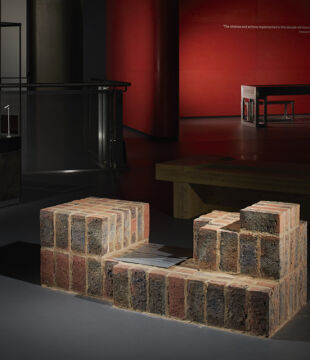
Details
Location: London
Brick Manufacturer: Wienerberger Limited
Brick Name: Grove Orange
Architect: Satish Jassal Architects
Brickwork Contractor: BMR Brickwork
About the project
Rowan Court is a 100% council-rent housing scheme designed by Satish Jassal Architects for Haringey Council, delivering 46 low-carbon homes on a complex, triangular backland site in Seven Sisters, north London. The development comprises a mix of apartments, townhouses, and intergenerational maisonettes arranged around a new public square, mews street, and communal courtyard. The project transforms neglected land and disused garages into a vibrant and integrated part of the existing estate, demonstrating how estate regeneration can be achieved through design-led infill.
A central ambition of the project was to create a unified but varied townscape - one that respects the grain of the surrounding 1970s and 1890s housing while elevating the quality of the built environment for existing and new residents. This was achieved through a material-led approach in which clay brick plays a pivotal role in both architectural expression and placemaking.
The Wienerberger Grove Orange brick is used consistently across the site to provide visual continuity, but its application varies through an inventive use of bonding and detailing. Stack bonding and vertical stack bonding are used to create shifting rhythms and subtle patterns that animate the façades. These alternate with areas of traditional stretcher bond to establish visual depth, tactility, and hierarchy across elevations, without relying on superficial ornament.
To further articulate the brickwork and create a rhythm across the site, glazed white brick piers are introduced as a unifying device. These semi-glazed vertical elements frame window openings and entrances, accentuating key thresholds while tying together the diverse housing type - from the six-storey corner block to the stepped townhouses. The glazed brickwork reflects light differently from the red brick, providing a refined contrast that enriches the palette without introducing unnecessary complexity.
Importantly, this brick language extends into the landscape. The same glazed bricks are used in seating walls, planter edges, and thresholds, reinforcing the architectural coherence between buildings and public realm. This integration ensures that the landscape and architecture work together as a seamless whole, delivering not only cohesion but also a strong sense of place.
Beyond aesthetics, brick was chosen for its sustainability, robustness, and low maintenance requirements - essential for long-term council ownership. Its thermal mass contributes to passive environmental performance, while its inherent durability ensures resilience over time. The use of brick also enabled on-site craftsmanship, with all façades laid by hand rather than using brick slips or cladding panels.
Rowan Court demonstrates how a familiar material, used with care and imagination, can help elevate affordable housing into architecture of lasting civic value. In the words of its architect, “brick is a craft material that connects us to the earth, the context, and the people who build and inhabit these places.” At Rowan Court, this ethos has been fully realised.















